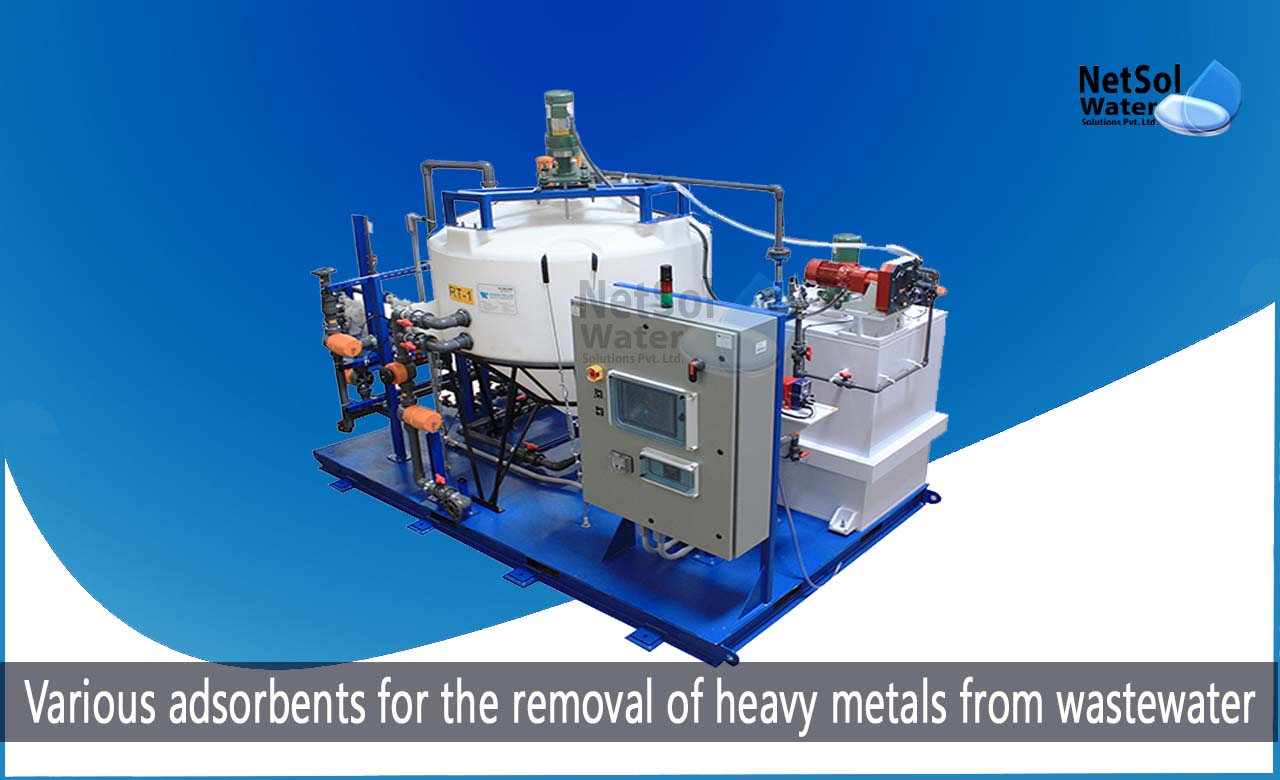Freshwater resources are in low supply in the world today, thus finding alternatives that reduce the strain on the available resources is inevitable. Additionally, heavy metals are poisonous even in trace amounts; therefore, inexpensive adsorbents are necessary for heavy metal removal that is safe for the environment.
For the removal of heavy metals from wastewater, adsorption methods are widely utilized. Activated carbon is the most popular adsorbent and produces the best results, but its use is constrained by its expensive price.
Types of adsorbents
A solution containing the adsorbate is adsorbed on the surface of an adsorbent, during the surface phenomenon known as adsorption.
There are two different types of adsorption phenomena:
1. Physiosorption, where the adsorbate attaches to the adsorbent through forces, and
2. Chemisorption, where the adsorbate and adsorbent undergo chemical interactions.
While, chemisorption is irreversible, selective, and typically endothermic, physiosorption is reversible, weak, and endothermic.
How many adsorbents for the removal of heavy metals from wastewater?
There are various commercial or bio adsorbent types, which are employed for the effective removal of heavy metals from wastewater.
· Graphene
Due to their increased surface area, improved active sites, and the functional groups that are present on their surface, nanomaterials are effective adsorbents for the removal of heavy metals from wastewater.
A nanomaterial made of carbon called graphene has a two-dimensional structure, a large surface area, and good chemical stability. It can be found in virgin graphene, graphene oxide, and reduced graphene oxide, among other forms. For the removal of heavy metals, graphene can be oxidized to add hydrophilic groups.
· Activated Carbon
Activated carbon has a well-developed porous structure and a large internal surface area for adsorption, making it an effective adsorbent for the removal of chromium.
It is costly and has a restricted utility because it is commercially produced by the carbonization of materials, like coal and wood. They are mostly made by carbonaceous material being pyrolyzed at temperatures below 1000°C.
· Zeolites
They are crystalline-structured alumino-silicates that can be produced artificially or naturally. They are among the greatest adsorbents for removing heavy metals because, they are made of hydrated aluminosilicate minerals, which are composed of silica and alumina that are connected to one another.
Zeolites are incredibly effective adsorbents for heavy metal cleanup due to their high specific surface area, significant ion exchange capabilities, and hydrophilic characteristics.
· Carbon Nanotubes
Due to their chemical stability, wide surface area, outstanding mechanical and electrical capabilities, adsorption property, and well-developed mesopores, carbon nanotubes are effective adsorbents for heavy metal removal.
Conclusion
One of the most serious issues we currently confront is heavy metal contamination. Even at very low quantities, they are hazardous. Many of them are exceedingly deadly, carcinogenic, and cause birth abnormalities. Therefore, before wastewater is released into open seas or rivers, these harmful metals must be removed.
One such method that not only addresses the removal of heavy metals from wastewater but is also eco-friendly, and has a small environmental impact is adsorption.
Best manufacturers of wastewater treatment plants for the removal of heavy metals
Netsol Water has assisted in the resolution of hundreds of water and wastewater-related problems, in residential, commercial and industrial sectors by deploying a wide range of specialized, water treatment and wastewater treatment technologies.



